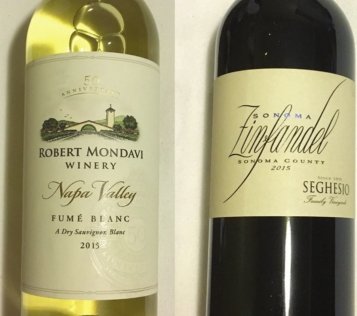Take that in. Do you feel that? That’s freedom.
There is so much America around you, and America wants you to eat and drink the things you want to eat and drink. It’s exciting to go off into the wine wilderness and find the hidden gems of Austria, southern Italy, South Africa, Hungary or the mountains of Chilé. But America’s story is rich, and worth talking about.
In the states, we have infinite access to good wines and great experiences. Yes, there are many markers to the east, to the history of European winemaking, but those vines don’t taste like freedom.
So, let’s talk about what American wine is.
The most historically appropriate answer is damn near anything in the Vitis labrusca or Vitis riparia species. But nobody’s making any wines that you can age for twenty years from these species. Grapes like Baco Noir, Frontenac, Concord, Niagara, Catawba, Bacchus are all important for the every day, under $12/ bottle wines. And look around, these grapes are not the pinnacle of America’s success.
So, we have to talk about Vitis vinifera, the species that comprises almost every grape you’ve ever heard of. Cabernet sauvignon? Merlot? Chardonnay? Pinot Noir? All vinifera.
Let’s start with the grape that put the United States uniquely on the map: Zinfandel.
But it isn’t originally from the United States, and it wasn’t at first called zinfandel. It’s often called Primitivo in Italy. But that’s also not the original name. The grape makes good, cheap, wine — no matter what it’s called. Its roots are in Croatia under the name Tribidrag, not the genetic cousin Plavac Mali. But it’s zinfandel, no matter where it’s grown.
Many of the early California grape growers about 150 years ago were Italian or Croatian. And some of them brought some productive Tribidrag vines over to the left coast.
Fast forward a century, and here we are looking in the rear-view mirror at the legacy of 40 years of great California zinfandel.
Yes, some of the best wines in this country are crafted from the vines of chardonnay, pinot noir, cabernet sauvignon, and merlot. Undoubtedly. But zinfandel is pure America. It represents the rise of the unknown avatar of truth. It conjures flavor, character and joie de vivre, in a way that no other grape has uniquely accomplished in the states.
Where to get great Zinfandel.
Zinfandel will never be the best grape ever, but its history is truly American. There are a dozen or so zinfandel producers who are arguably very important, but Seghesio Family Vineyards have a fighting chance to be considered the alpha, based on acknowledgment, balance, and value.
Their 2015 Sonoma County zinfandel is everything an affordable zinfandel should be: fruity, ripe, fun, spicy, and many more adjectives and less than $25. Most importantly, zinfandel shouldn’t be more than $40, probably ever.
If you can’t find Seghesio, check out Ridge and Wild Hog for roughly equal the price.
Where to find amazing and affordable American wine.
Look toward Montoya’s 2015 Cabernet Sauvignon, for roughly $14. You’re not going to find complexity in this wine, but it’s perhaps the best crowd-pleasing red wine I’ve tasted in the last year. Notes of blackberry, Cassis, Chambord...this wine is decadent. It’s everything we can hope for — for the price they ask.
For the summer, we should talk about white wines.
Even though Robert Mondavi is part of the Constellation Brands corporate machine, they’re still growers of one of the best white wine values under $20. Their 2015 Fumé Blanc is worth every penny, and is fresh, citrus-like, and ready for all summer drinking.
Something else to consider: Merlot.
Don’t sleep on good merlot, because it can change your life. The 2012 and 2013 vintages were impressive, mostly because mother nature didn’t get in the way. The 2013 Duckhorn Merlot won’t blow any hipsters away, but it’s one of the best wines this author has had this year (~$30). And let’s be real. Napa Merlot is as American as it gets. It pairs just fine with hot dogs and fireworks.
Justin King is a certified sommelier and owner of Bridge Street Social, a wine and cocktails-focused restaurant in DeWitt.
Support City Pulse - Donate Today!
Comments
No comments on this item Please log in to comment by clicking here